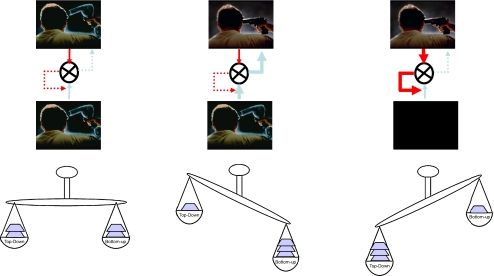Fig. 1.
A schematic representation of the effects of a shift in balance between bottom-up and top-down processing. Bottom-up signal is represented by blue arrows and top-down signal (‘priors’) by red arrows. Discrepancies between these signals are presented by differences in the thickness of the arrows and by the cartoon scales. Under normal circumstances (left panel), the match between bottom-up signal and prior knowledge means that there is no requirement to change prior beliefs and perception is normal. If, however, there is persistent bottom-up firing (prediction error), prior beliefs will continually fail to match the incoming signal and will need to be changed in order to accommodate the signal and minimise the persistent prediction error. This, we suggest, is a basis for changed beliefs characteristic of delusions (middle panel). If, on the other hand (right panel), strong priors exist in the absence of strong reliable bottom-up signal, these priors may be sufficient to create a percept, a basis, we suggest for hallucinations

